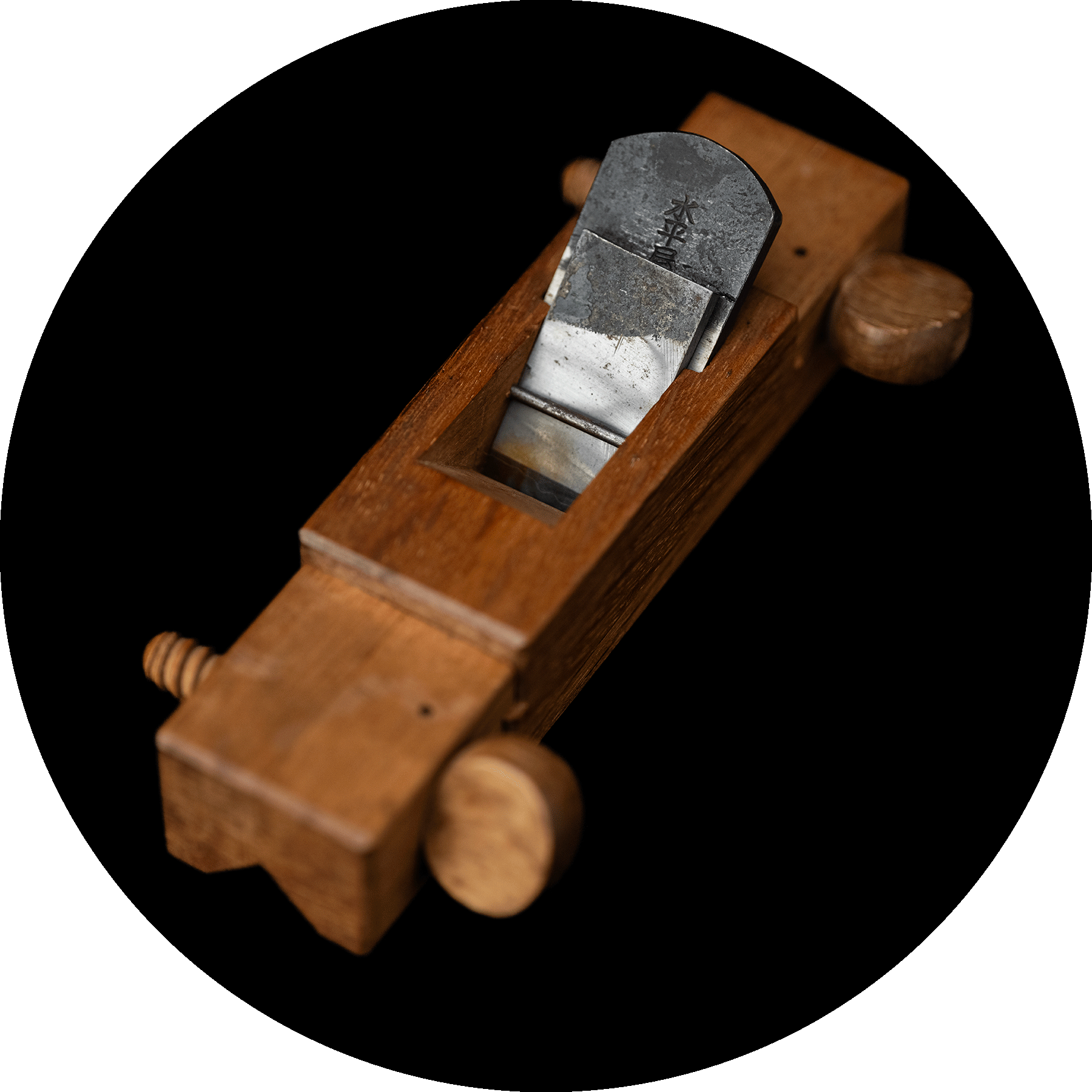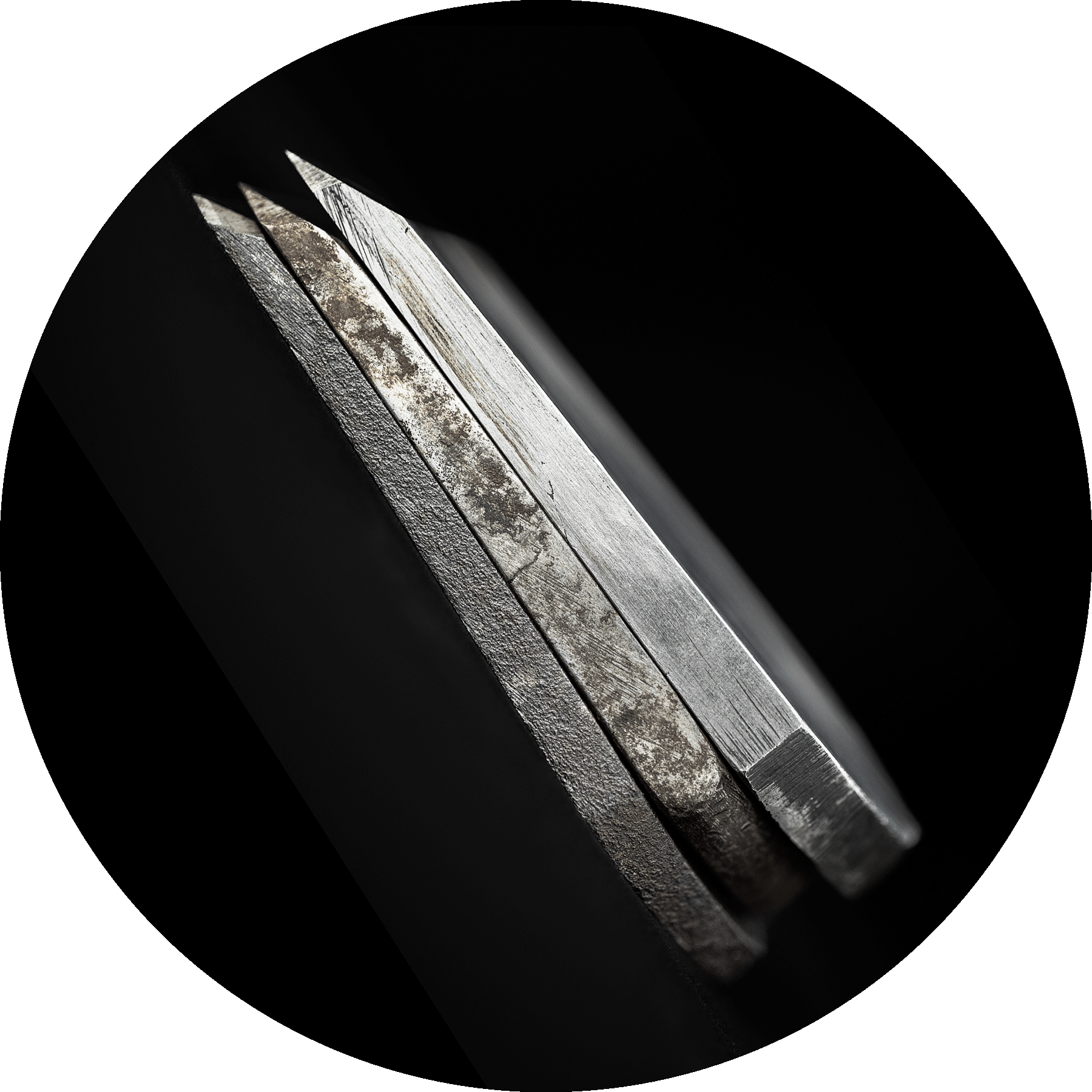Some characteristics of Kiyotada chisels can help identify "OEM products"
This blog was inspired by a friend from Germany who wanted me to provide some reliable information on how to identify Kiyotada chisels. I must say up front that as a foreigner I am not an expert on this. These characteristics are based on my observations of a large number of Kiyotada chisels.
Whether as a user or a collector, I believe everyone wants to buy tools made by the blacksmith himself, rather than OEM products made by other blacksmiths. In recent years, Tokyo chisels, especially Ichihiro and Kiyotada, have been favored by users and collectors from all over the world, and their prices have risen. They are often sold at high prices When some Kiyotada or Ichihiro chisels that are not made by the blacksmith himself occasionally appear on the market. As a beginner in Japanese tools, I spent a lot of "beginner tax" for this. According to my observation, such tools are often purchased by "foreign" Japanese tool fans, including me, at high prices without knowing it.
On the other hand, shops are often vague about the blacksmiths behind them when selling these OEM tools, which means that most of the time, foreign buyers who don't understand Japanese can only judge the "authenticity" based on the mark. From the store's standpoint, these marks that they legally registered and own, all transactions are legal and compliant, and they do not believe there is anything wrong with these OEM tools.
The information asymmetry between sellers and buyers puts us foreign buyers, especially beginners, at a disadvantage in transactions. To avoid this, I will share some of my experiences that I have gained by paying the "beginner tax".
Tataki nomi with "天峯/Amamine" mark by Kiyotada II. I found this chisel in a tool store in Chiba Prefecture. The owner told me that it was made by the second generation Kiyotada. He said there was a "kiyotada" mark on the "tang" part of the chisel where it went into the wooden handle, and he picked up the hammer to remove the handle to show me. I immediately stopped him and told him that he didn't need to remove the wooden handle, I would buy it.

Judging From The Mark
Using the mark as a basis is the most convenient way for beginners to judge, but due to the existence of OEM products, it is very risky to make decisions based solely on the mark. Recently, I found some OEM "Kiyotada" chisels on the Internet that were not made by the second generation Shimamura Kouzaburo and "Ichihiro" chisels that were not made by Yamazaki family.
The first generation of Kiyotada mark
The marks of the first generation of Kiyotada are obviously different from the second generation Kiyotada, and the first generation of Kiyotada was far less well-known than the second generation of Kiyotada at the time. The cost of making a OEM Kiyotada is high and the profit is small. According to the information I have at present, there are basically no OEM chisels for the first generation of Kiyotada marks.
The second generation of Kiyotada mark
Since the "Kiyotada" mark was registered by the Suiheiya store, no other wholesalers or stores except Tsuchida Store can use the "Kiyotada" mark, which results in various "marks" on the chisels made by the second-generation Kiyotada blacksmith. For details, please see another blog —— 『MARK OF KIYOTADA CHISELS』
There is a certain risk in buying a second generation Kiyotada chisel based solely on the mark. According to my experience, you should be cautious when purchasing a "別清忠" mark chisel. After the second generation of Kiyotada retired, the store asked a blacksmith from Niigata to make chisels and sold them with the "別清忠" mark. I went to the Suiheiya store in Asakusa in 2019 to look for the "Kiyotada" chisel, and the store owner showed me the "Kiyotada" chisel made by the Niigata blacksmith and told me clearly that it was not made by Shimamura Kouzaburo. I appreciated his honesty and meticulous work.
Judging from the details of the shape
In addition to the large differences in shape caused by different uses, Japanese chisels will also have slight changes in length, proportion, thickness, shoulder shape, etc. due to the requirements of users or sellers, or some exploration and learning done by blacksmiths when the style has not yet been established in the early days, resulting in some differences in the overall shape of each batch of products.
However, chisel blacksmiths will inevitably form certain habits in the long-term repetitive work, and these habits will be reflected in some details of the shape. From my observations of the various second-generation Kiyotada chisels that I currently collect, as well as those that have been sold and seen in stores, there are two details in the shape that are worth noting.
The red arrows in the two pictures below point to the modeling details that are characteristic of the second-generation Kiyotada chisel. In most chisels,Including the Kiyotada chisel made by the Niigata blacksmith that I saw, the lines at these two parts tend to intersect.


Judging from the direction of the file processing marks
The direction of the file marks on the chisel is a "fingerprint" with high judgment value formed by the chisel blacksmith due to his working habits, especially those blacksmiths who insist on using files for final finishing, such as Ichihiro, Kiyotada, etc. The file marks can be observed on the neck, side, and chamfered surface of various chisels made by these blacksmiths.

According to my experience, the file texture on the chamfered surface of the chisel is the easiest to observe. However, it is difficult to use this method to judge the Kakuuchi chisel because it has no chamfered surface. (or other special chisels without chamfered surface.)
The picture below shows the directional and mirror-symmetrical file marks on the chamfered surface of the second-generation Kiyotada chisel.
Below are some different types of chisels made by Kiyotada II. Please help me check whether they have the characteristics I mentioned above.
1: Tataki nomi with Kiyotada mark by Kiyotada II, 48mm. 

2: Oire nomi with "特清忠/Toku Kiyotada" mark by Kiyotada II, 42mm.

3: Oire nomi with "別清忠/Betsu Kiyotada" mark by Kiyotada II,15mm.

4: Usu nomi with "別清忠/Betsu Kiyotada" mark by Kiyotada II, 30mm.

5: Kakuuchi Usu nomi with Kiyotada mark by Kiyotada II, 30mm.
6: Shinogi Tsuki nomi with Kiyotada mark by Kiyotada II, 24mm.

7: Sotomaru nomi with Kiyotada mark by Kiyotada II, 18mm.

8: Ootsuki nomi with "別清忠/Betsu Kiyotada" mark by Kiyotada II, 54mm.




